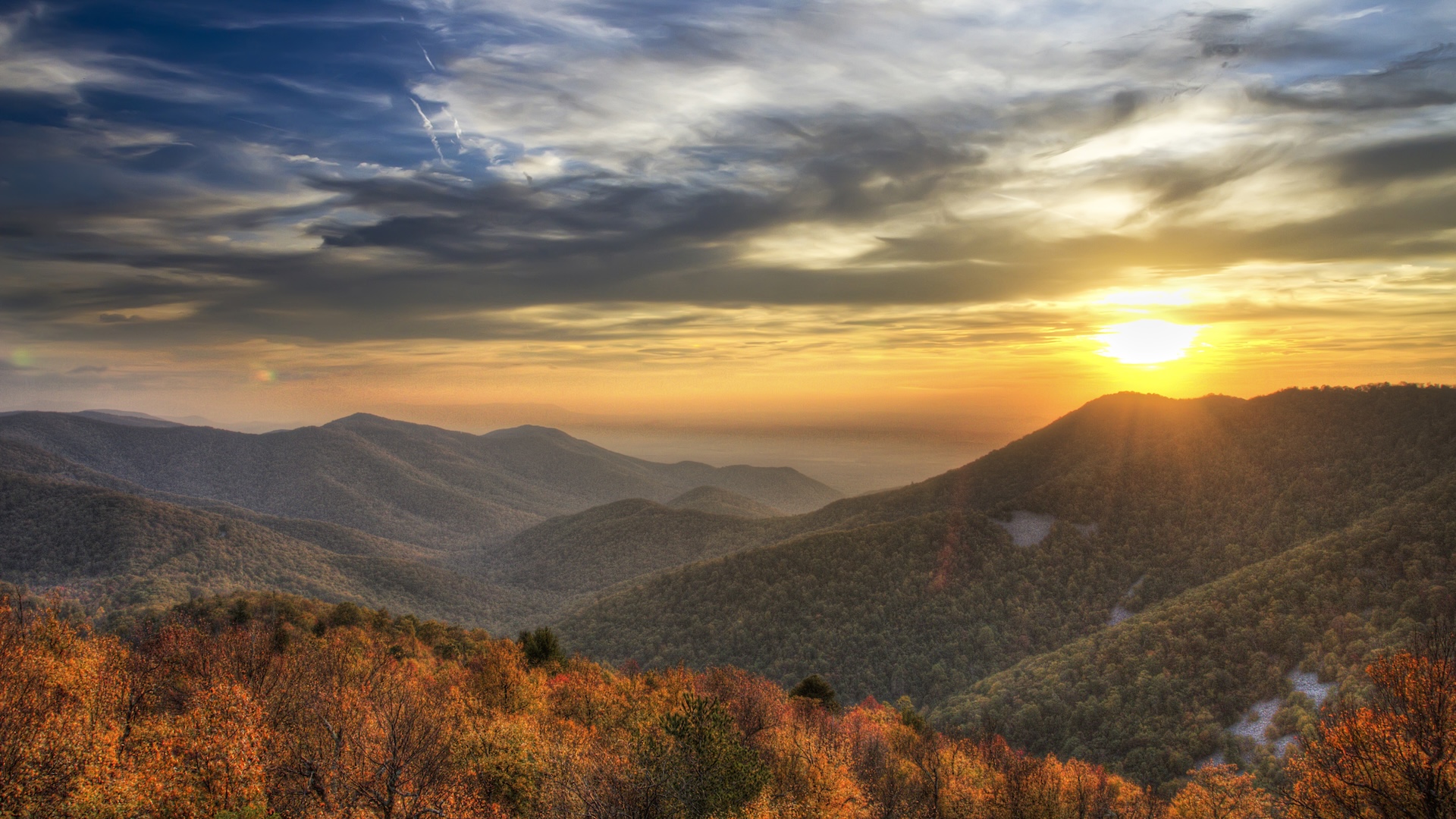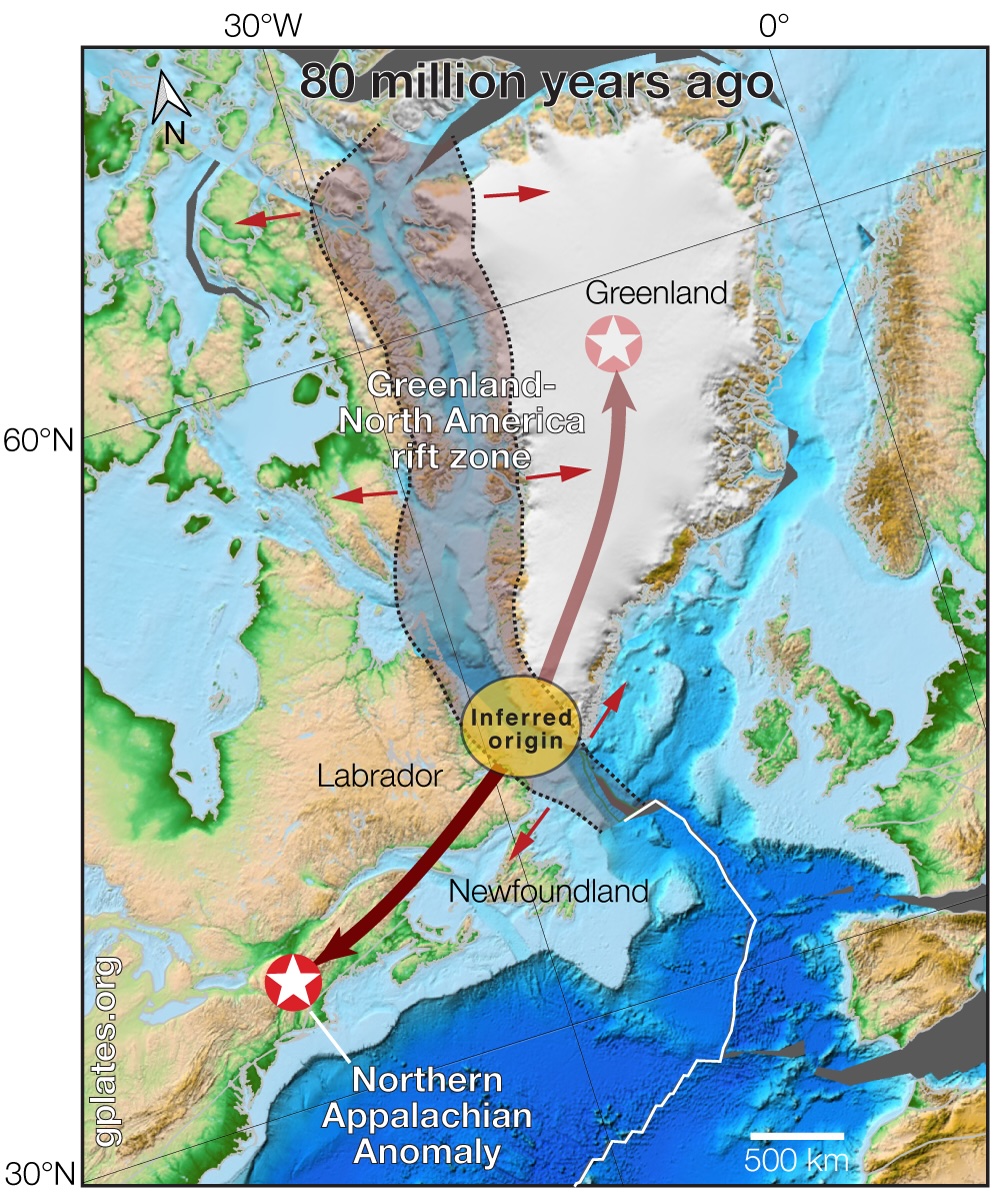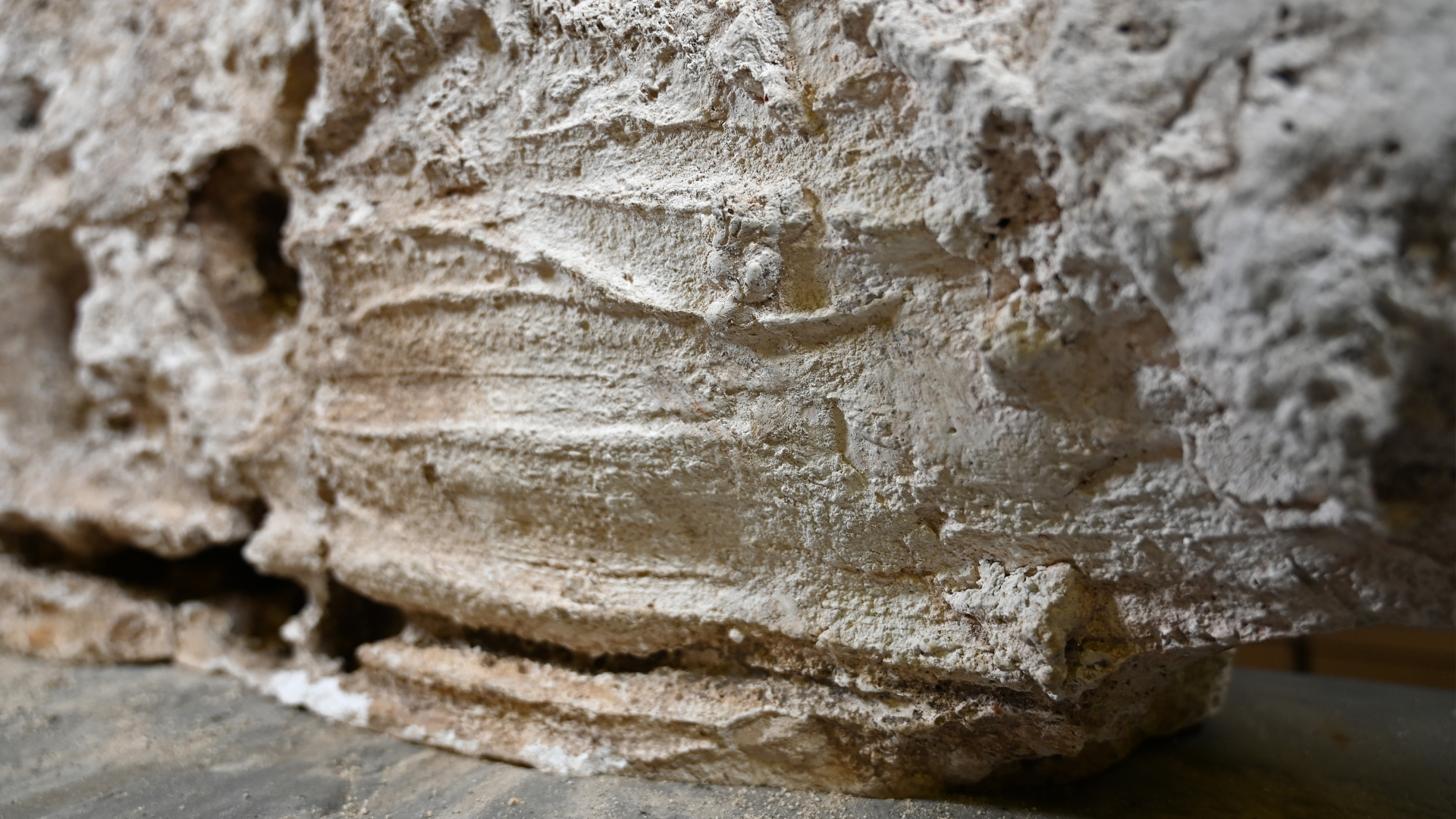Hot blob beneath Appalachians formed when Greenland split from North America — and it's heading to New York
A hot blob currently beneath the Appalachians may have peeled off from Greenland around 80 million years ago and moved to where it is today at a rate of 12 miles per million years, scientists have found.

A giant blob of abnormally hot rock beneath the Appalachian Mountains formed when Greenland separated from North America around 80 million years ago, new research suggests.
Scientists previously thought that this hot zone, known as the Northern Appalachian Anomaly, was left over after North America broke away from Africa 180 million years ago, but this theory does not stand up to new scrutiny, according to the study, published Wednesday (July 30) in the journal Geology.
"This thermal upwelling has long been a puzzling feature of North American geology," lead author Thomas Gernon, a professor of Earth science at the University of Southampton in the U.K., said in a statement. "It lies beneath part of the continent that's been tectonically quiet for 180 million years, so the idea that it was just a leftover from when the landmass broke apart never quite stacked up."
Instead, the new findings indicate that the hot blob, which sits 125 miles (200 kilometers) deep and stretches 220 miles (350 km) across New England, appeared around 80 million years ago, when what are now Greenland and Canada were breaking apart. The results suggest that such blobs occasionally form in continent breakups, with possible knock-on effects for mountains, volcanoes and ice sheets.
Gernon and colleagues described how hot blobs form in a study published last year in the journal Nature. Hot blobs are created when material from Earth's mantle rises to fill gaps in the crust left by rifting. This material eventually cools and becomes so dense that it sinks, or "drips," setting off chain reactions in the mantle that the researchers called "mantle waves."
There may be special conditions required for mantle waves to form, Gernon told Live Science in an email, including a steep temperature gradient where the dripping material enters the mantle. This means that not all continent breakups create mantle waves, Gernon said.
Related: North America is 'dripping' down into Earth's mantle, scientists discover
Get the world’s most fascinating discoveries delivered straight to your inbox.
For the new study, the researchers used direct geological observations and computer simulations to model plate tectonics and geodynamics. They simulated the initiation of a hot blob 1,120 miles (1,800 km) northeast of the Appalachians and found that geologic processes pushed the blob southwest at a rate of 12 miles (20 km) every million years. These results were consistent with previous estimates, according to the statement.
The team's simulations showed that the hot blob may have helped to uplift the Appalachian Mountains when it got there, solving the long-standing question of why the Appalachians remain so high despite major erosion over the past 20 million years.
"Heat at the base of a continent can weaken and remove part of its dense root, making the continent lighter and more buoyant, like a hot air balloon rising after dropping its ballast," Gernon explained in the statement. "This would have caused the ancient mountains to be further uplifted over the past million years."
Hot blobs elsewhere could explain why mountains with a geology similar to the Appalachians are still standing, Gernon said. These blobs could also explain rare volcanic eruptions that bring diamonds to Earth's surface, according to the statement.

Looking at Greenland's blob
The study focused mostly on the Northern Appalachian Anomaly, but the researchers also examined its "twin" — a hot blob currently sitting beneath north-central Greenland. That anomaly was born in the same continental breakup event, but on the other side of the rift, according to the statement. The team noted that it creates heat currents beneath the Greenland Ice Sheet that influence how the ice moves and melts today.
"Ancient heat anomalies continue to play a key role in shaping the dynamics of continental ice sheets from below," Gernon said. "Even though the surface shows little sign of ongoing tectonics, deep below, the consequences of ancient rifting are still playing out."
The Northern Appalachian Anomaly is still on the move, and the researchers estimate that it will continue on its path to reach New York in 10 million to 15 million years.
Once the hot blob leaves the Appalachians, Earth's crust there will settle again, Gernon said. "In the absence of further tectonic or mantle-driven uplift, erosion would continue to wear down the mountains, gradually lowering their elevation," he said.
Overall, the results reveal that continent breakups and other major geological events can continue to influence the planet for thousands, and even millions, of years, the researchers said in the statement.
"The idea that rifting of continents can cause drips and cells of circulating hot rock at depth that spread thousands of kilometers inland makes us rethink what we know about the edges of continents both today and in Earth's deep past," study co-author Derek Keir, an associate professor of Earth science at the University of Southampton and the University of Florence in Italy, said in the statement.

Sascha is a U.K.-based staff writer at Live Science. She holds a bachelor’s degree in biology from the University of Southampton in England and a master’s degree in science communication from Imperial College London. Her work has appeared in The Guardian and the health website Zoe. Besides writing, she enjoys playing tennis, bread-making and browsing second-hand shops for hidden gems.
You must confirm your public display name before commenting
Please logout and then login again, you will then be prompted to enter your display name.


